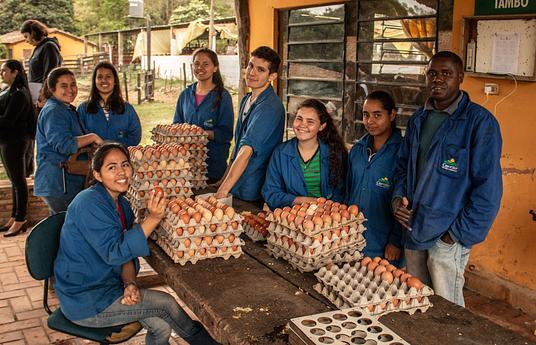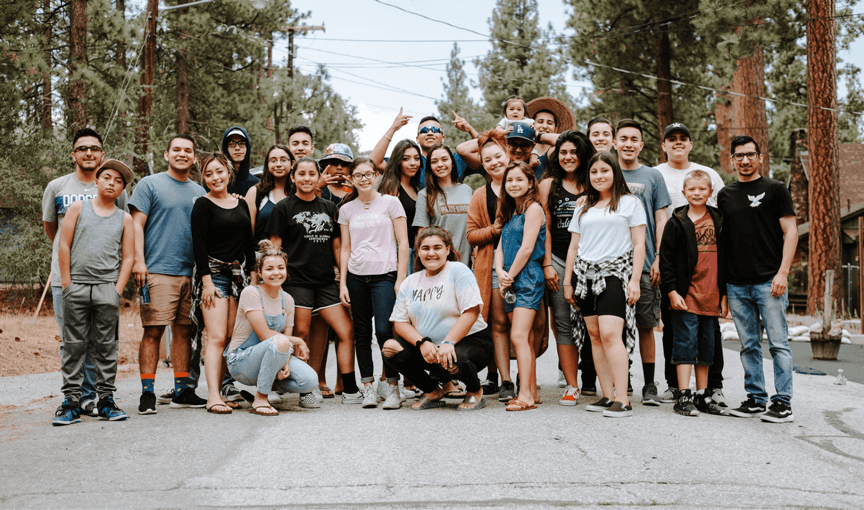Children today face an increasingly complex world. This trend includes the pandemic, the climate crisis, increased inequality and rapid technological changes. All children will need to learn and adapt throughout their lives, and education systems need to support them by instilling motivation for learning and improvement.
But education systems are failing to address this need. Despite huge increases in education spending over the past two decades, children are not achieving the desired outcomes. A lack of belief and investment has led to widespread demotivation of teachers and officials, as seen through high levels of absenteeism and low levels of job satisfaction. For example, a 2014 UNESCO report in Uganda estimated that 84% of primary teachers in Uganda wanted to quit the profession in two years.
What we do?
Behaviour change.
At its core, our work is about changing behaviours and attitudes at every level by reigniting intrinsic motivation. We work with our government partners to define the desired behaviours that they want to see at each level of the system, and help them to clearly demonstrate how these can be promoted through strong role-modelling and positive relationships.
At child level we want to see participation and learning as an active choice and a desire to keep on learning more. For teachers, effective deployment of teaching strategies with a desire to improve their classroom practice and for officials, spending more time in schools while supporting teachers.
These behaviours are reinforced across all of our activities, and we have developed practical behavioural measures to help us to understand this change through our monitoring and evaluation.
Government and other partnerships.
No NGO intervention can last forever and STiR is very aware how difficult it can be to achieve true sustainability. Government ownership and adoption are essential for long-term sustainability. Our team works to ensure that the approach is increasingly prioritised within our partner systems. We initiate deep learning partnerships with the governments, with all activities delivered by existing government officials to build strong ownership. And we collaborate to customise and design content for each geography, while we work closely to ensure that the programme aligns with their policies and priorities. Working in this way makes our model incredibly cost-effective. Our only expense is our team, and we currently spend less than $1 per child annually.
How it works.
Behaviour change takes time. So our programme enables incremental improvements at every level that contribute to a system shift. We introduced peer networks for teachers and officials – monthly meetings for small groups of peers to strengthen connections, foster mutual support, and ensure sustainable improvement through learning new strategies to embed into their professional practice. Every teacher and official will engage in these activities in our termly learning improvement cycles (LICs), and each LIC is focused on different themes, for example, science of learning.
First, district officials are introduced to the content for the next term, they then lead the training sessions for school leaders who share the content with the teachers. Every month, 20-30 teachers meet in peer networks – which is led by school leaders to expose them to best classroom practices and strengthen peer connection.
Between meetings, teachers act on their learning by introducing new practices in their classrooms and given feedback by school leaders. The next month, teachers reconvene to reflect on their experiences and adapt and refine their action plan accordingly. After each third network meeting, teachers move on to a new area of practice. And the cycle continues.
Supporting school leaders and officials.
In this model, every level of the system needs to develop strong role-models and trusting relationships.
District officials participate in termly training institutes with their peers to understand new practices for each term. They then lead training institutes for school leaders, to empower them to lead teacher network meetings effectively. Over the course of the term, both groups actively support teachers by conducting developmental observations and feedback, creating emotional safety and using data to provide rich insights – which grows their intrinsic motivation.
We aim to show governments that our approach can be a highly cost-effective mechanism to increase the effectiveness and impact of their overall investment in education, and influence them to place increased focus on reigniting intrinsic motivation at every level. Over time, we expect to step back our own involvement with governments increasing their own contribution to the costs of delivery. We’re also starting to explore opportunities to partner with other implementing entities to amplify our approaches and improve our own organisational sustainability.
2025 Strategy
1. Realising sustainable systemic behaviour change. By 2025, we want to see meaningful and sustained behaviour change which continues to deepen across systems over time.
2.Driving equity to support Covid-19 recovery. We intend to more deliberately understand inequities in partner systems. We will explicitly address these in our programme design and share our learning with governments and the wider sector.
3. Advocating for change within the education sector. We will advocate for greater investment in intrinsic motivation and lifelong learning to strengthen education systems.
4. Strengthening autonomy, mastery and purpose at all levels of STiR. We need to better support our internal team to realise our 2025 vision. Our leadership team will role-model learning and improvement and ensure strategic clarity. We will also upskill and motivate our team to ensure our success.
Impact
A case study was conducted alongside the International Institute for Educational Planning of UNESCO (IIEP-UNESCO) which focused on the project in Delhi. Their report found that the programme has had noticeable positive effects and it can be seen through increased teacher collaboration and improvements in student outcomes.
In 2019, the Mastercard Foundation commissioned a similar review into STiR’s work in Uganda. This found that the programme was directly supporting the government’s priorities for teaching and learning. It was also observed that officials showed commitment to the concept of teacher motivation.

.jpg)

